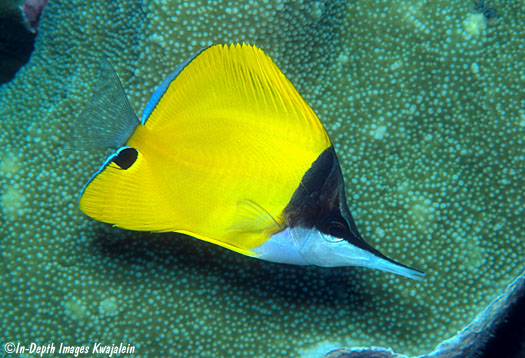
This is a very common species at Kwajalein and can be seen on most lagoon, pinnacle, and seaward reefs. It is very similar to the closely related Forcipiger longirostris, also very common at Kwaj. The two species can most easily be distinguished in the wild by the shape of the mouth and one color detail. The mouth on F. flavissimus is forceps-like, while that of F. longirostris is more like a hole at the end of the long snout. In F. flavissimus, the white area behind the gill plate and below the pectoral fin is pure white, but in F. longirostris, it is white with black spots. Also F. flavissimus tends to have a shorter snout than F. longirostris of the same size. We usually see these paired or in small groups. They have a varied diet including small crustaceans and hydroids, but are also reported to peck off pieces of larger invertebrates such as echinoderms and worms.

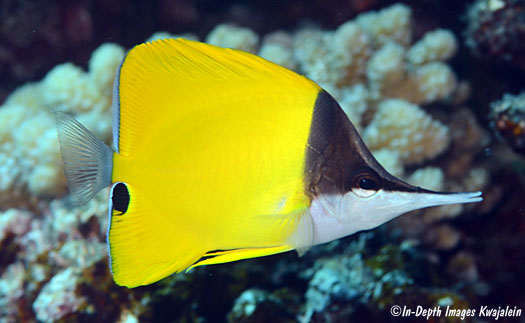
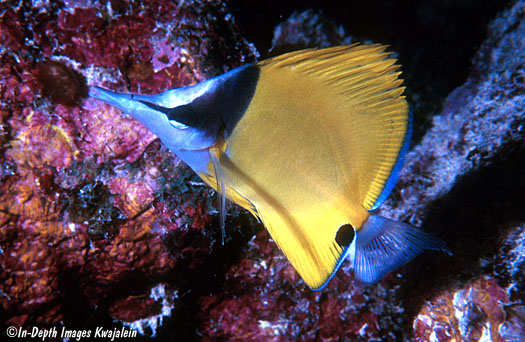
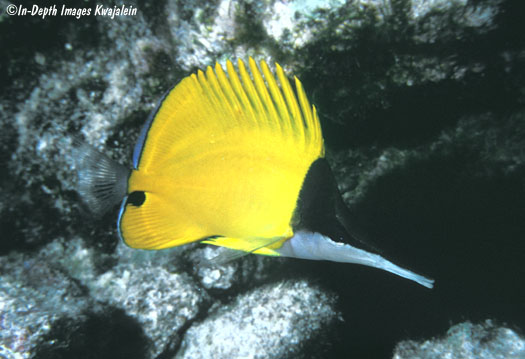
The next one certainly has some abnormal coloration, and the sheath is missing from its first couple of dorsal spines. Possibly a skin disease?
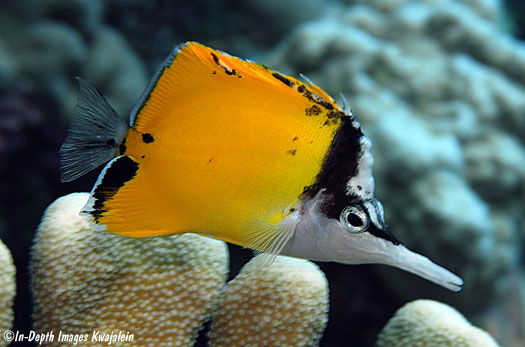
Created 15 October 2010
Updated 7 January 2013